1. A short history of the conflicts
2. The role of the Venom fighter-bomber in the Jebel Akhdar conflict
3. Crash site of a Venom on Saiq Plateau – a personal search
by Laurence Garey
Many people coming to live and work in the UAE or Oman hear of the so-called Buraimi and Jebel Akhdar conflicts of the 1950s. So many variants of the story exist that I thought it of interest to summarise what I have learned of these events, and particularly of some of the remnants and reminders of those bloody days that can still be seen. I should be pleased to receive comments and corrections to my version.
1. A short history of the conflicts (1,2)
In the 1950s life in Oman was primitive and poor. Roads, hospitals and schools were virtually nonexistent. Many Omanis were illiterate and in poor health, but would defend their independence against any aggression. The geography of Oman divided an outward-looking society of merchants and seamen along the coast (with their capital in Muscat – see Map 1) from an inward-looking, conservative, society in the interior.
From 1932 to 1970 the ruler was Sultan Said bin Taimur Al Bu Said. Although the absolute ruler of Oman, religious factors and tribal loyalties limited his power. The tradition in central Oman was that a leader, the Imam, must be elected from among the people. This occasioned numerous confrontations between the coastal based Sultans and conservative Imams of the interior. In 1920 the Imam concluded the Treaty of Seeb (a town near Muscat, Map 1) with the Sultan. It established the Sultan as paramount, and consolidated his control of foreign affairs. It also recognised a measure of autonomy for the tribal leaders including the right to adjudicate their internal affairs and elect their Imam. The treaty brought peace between Muscat and Oman that lasted from 1920 until the 1950s, when the impact of anti-colonialism and oil prospection inflamed traditional, tribal values.
In the early 1950s ARAMCO, a Saudi-American oil company, believed that oil existed in commercial quantities near the Buraimi oasis (Map 1). There emerged a tenuous claim that Buraimi was Saudi territory, based on the fact that in the nineteenth century Saudi tribes had occupied part of it. In fact their last occupation had ended in 1869 in expulsion by the Sultan of Muscat. As Buraimi is on their mutual border both Abu Dhabi and Oman requested that Britain negotiate with the Saudis on their behalf. A Saudi garrison of forty men occupied Buraimi on 31 August 1952 (3). Sultan Said and Imam Mohammed raised an army of 8000 tribesmen at Sohar, in striking distance of Buraimi via Wadi Jizzi (Map 1). An agreement was reached between the Saudi and British governments; the Sultan was persuaded not to take military action and the army dispersed. The Saudi garrison remained in Buraimi, surrounded by the Trucial Oman Levies, a small local army with British officers, designed to keep the peace in the Trucial States, that later formed the United Arab Emirates. During this siege, the Levies were believed to be selling their ammunition to the Saudis, so the Levies’ commander intervened. As his Land Rover approached the blockade it was fired upon by the Levies who killed him and two others.
In August 1954, an international tribunal in Geneva decided to allow detachments of Saudi police and Trucial Oman Levies into Buraimi. In September 1955, the British walked out of the Geneva negotiations and, in a reversal of policy, encouraged the Sultan of Oman and the ruler of Abu Dhabi to occupy Buraimi. What the Sultan had wanted to do in 1952, he was ordered to do in 1955. The Levies rounded up the Saudi police, installed the Sultan's Wali in Buraimi Fort (Figure 1), and invited a detachment of the Sultan’s Army to occupy Buraimi. To regain the town as a gift from the British rather than by force of arms must have compromised the Sultan's prestige. Had the Sultan been permitted to expel the Saudis in 1952, the country might have been spared a bitter rebellion a few years later.
The use of bombers of the Royal Air Force (RAF) in Oman began with some Avro Lincolns (Figure 2) of 7 Squadron that flew low over the Buraimi area in 1955, to show how seriously Britain took the situation (2). The Lincoln was a development of the well-known Lancaster of World War Two vintage, a four-engined heavy bomber that made an incredible noise when flown at low level. It must have intimidated the occupiers of Buraimi to a not inconsiderable extent.
The years from 1952 and 1955 were bad years for the Sultan. The Saudis provided money and arms to the tribes of the interior with the intent of undermining his influence. In 1954 the much respected Imam Mohammed died and was succeeded by Ghalib bin Ali al Hinai, believed by many to be a result of Saudi interference. He was supported by his brother Talib, the Wali of Rustaq, and Suleiman bin Himyar, self-styled Lord of the Jebel Akhdar (Map 1). Relations between the Sultan and Ghalib worsened over rights to grant oil concessions. A subsidiary of the Iraq Petroleum Company wished to prospect near Fahud (Map 1). The Sultan claimed that dealings with the oil company were his prerogative, but Ghalib claimed that the oil was in his territory, so it was an internal matter and his prerogative. The Sultan licensed oil prospectors to search at Fahud, supported by Britain, but Ghalib attacked, and declared independence for the State of Oman. In response, in October 1955 the Sultan’s Muscat and Oman Field Force marched north from Fahud to occupy Ibri (Map 1), then under the Imam's control, to cut him off from Saudi support. Ghalib moved to expel the Sultan's forces from Ibri, but by Bahla (Figure 3) had received no support from Suleiman bin Himyar, and so retreated to Nizwa (Map 1). The Sultan then captured Bahla and Nizwa successively without firing a shot. Two days later, on December 15, 1955, the Sultan’s Batinah Force captured Rustaq fort (Figure 4), after determined resistance from Talib, the Imam's brother, who escaped. When his forces had occupied the rebel strongholds, the Sultan drove from his southern capital in Salalah in a remarkable 900km trek across the desert to Nizwa to accept the surrender of the rebels. He rescinded the Treaty of Seeb and abolished the office of Imam. Ghalib acknowledged the sovereignty of the Sultan, abdicated and returned to his village of Bilad Sait (Map 2). Suleiman pledged loyalty to the Sultan and, humiliated, retired to his village of Tanuf (Map 2, Figure 5).
Talib escaped to Saudi Arabia and during 1956 and 1957 trained a liberation army of Omani expatriates. Talib designated Ibrahim bin Issa to lead the rebellion. In March 1957, Ibrahim, with his followers, returned to Oman. In early June the Sultan invited Ibrahim to Muscat for discussions, but upon arrival he was clapped in the terrifying
prison of Jelali Fort. On 14 June 1957 Talib landed at Suwaiq on the Batinah Coast (Map 1) with 100 men while another 100 landed north of Sohar. Talib proceeded inland to his village at Bilad Sait where brother Ghalib, who had been living there peacefully, was persuaded to reassume the title of Imam. Suleiman joined the rebels which meant that the whole of Jebel Akhdar and its foothills were in revolt. Men of the Sultan's Oman Regiment drove in their Land Rovers to arrest Talib, but were trapped near Bilad Sait. Their vehicles were ambushed and destroyed in a battle that raged for a week. Only a few, including all their British officers, managed to fight their way out. They made for the oil camp at Fahud, 120km away, where they were disbanded. The Imam's white flag again flew over his capital of Nizwa, surrendered without a fight. As the Sultan's Oman Regiment was fighting for survival near Bilad Sait, Sayyid Tarik, the Sultan's half brother and viceroy of the interior, left Al Hamra (Map 2) with a small force. He was attacked near Tanuf but escaped. At Izki Suleiman ambushed the survivors heading for Muscat causing additional casualties.
On 16 July 1957, the Sultan requested British assistance, referring to a treaty between the United Kingdom and Oman in 1951. The Sultan's army was extremely weak, consisting of the Muscat Regiment of 120 men, the Batinah Force of 200 men, and the Oman Regiment of 300 men.
After the Suez catastrophe, Britain was subject to hostile scrutiny, particularly by Russia and a coalition of Egypt, Syria and Yemen. It was potentially politically dangerous, but Britain responded positively for a number of reasons. These included the RAF base on Masirah Island, further south along the Omani coast between Muscat and Salalah, and the hope that the Sultan would favour British oil and commercial interests. Also, to refuse the Sultan would question British presence along the whole coast from Aden to the Persian Gulf. But Britain's assistance was given on condition that Oman accept to change the worst aspects of the Sultan's government and agree to further British presence. Britain immediately provided a company of Trucial Oman Scouts (the former Trucial Oman Levies). Soon after, three companies of Cameronians and a troop of Hussars arrived. The initial British reaction was air attack. First, the RAF bombed the Jebel Akhdar plateau using 1000 pound bombs from Shackleton bombers from Khormaksar, Aden, but it was largely ineffective as the orders were to bomb caves (Figure 6) and water systems, not villages.
The Shackleton bomber (Figure 7) was the final derivative of the Lancaster/Lincoln family. It was also a large four-engined heavy bomber, designed for maritime support and anti-submarine bombing. Shackleton MR2 (for maritime reconnaissance) bombers of 37 and 42 Squadrons were used on Jebel Akhdar in 1957 and 1958, flying from their bases in Aden, Bahrain, Sharjah (Map 1) and Masirah. The first detachment was when half of 42 Squadron from St Eval in Cornwall arrived in Aden in January 1957. Then, in June, five more arrived in Aden from 37 Squadron in Malta, and took up residence there. Those of 42 Squadron moved on to Bahrain. In 1958, 228 Squadron moved into Sharjah, and later Masirah, and on 1 January 1959 two 224 Squadron Shackletons arrived there from Gibraltar. Altogether, the Shackletons flew 429 sorties and dropped 1540 tons of bombs during the Jebel Akhdar campaign (2).
Later, Venom fighters (Figure 8) (see below: The role of the Venom fighter-bomber in the Jebel Akhdar conflict) based in Sharjah attacked targets with rocket and cannon fire. (For more on RAF Sharjah see: http://l.garey.googlepages.com/rafsharjah,almahattamuseum). The rockets did little damage to the solid rock of the great fort at Nizwa (Figure 9) nor even the mud walls of the smaller forts. Since the Imam's flag was white, many pilots did not engage legitimate targets because they believed the flag indicated surrender. Reliance on air power reflected British policy in the region since the 1930s. Aircraft were expected to interrupt normal life so much that a revolt would end rapidly.
Top priority was the recapture of Nizwa, the Imam's capital. A force was sent to Nizwa through the Sumail Gap (Map 2). It was joined by tribesmen who hoped to take over the villages of Suleiman and Talib. The column encountered rebels near Mutti (Map 2). Two Venoms were called in. They did not fire on the first pass and the rebels cheered derisively. On the next pass cannon fire ended the laughter and the rebels fled into the hills. On 6 August 1957 another force of Hussars, Cameronians and Trucial Oman Scouts advanced from Fahud to Nizwa. While advancing on Firq (Map 2), the Scouts came under rebel fire. Even with the assistance of Venoms and the fire of machine guns and mortars, they were unable to advance. During the night of 10 August 1957 patrols of Hussars probed the enemy positions and discovered that the rebels held not only Firq but also the lower slopes of a hill to the southeast. The Venoms strafed the rebels the next day, after which the Cameronians seized the hill in a night attack and were in position to support the Scouts in a dawn attack. The plan was carried out with minimum casualties. The two forces met at Birkat al Mauz (Map 2), 12km east of Nizwa, on 12 August 1957 and soon occupied Nizwa.
Sayyid Tarik, the Sultan's half brother, took up residence in Nizwa Fort and controlled sources of information loyal to the Sultan; he provided the best guides and interpreters. Talib, Imam Ghalib, and Suleiman fled into the Jebel Akhdar. So the Sultan's forces controlled the land around the jebel and the rebels controlled the apparently impregnable heights.
Jebel Akhdar forms a high plateau measuring about 20km from north to south and 30km from east to west (Figure 10). Its average elevation is about 2000m and it is surrounded by cliffs rising to 3000m. Since many of the cliffs are almost vertical, the tracks to the top could be easily defended by the rebels. Stores and weapons, including machine guns, mortars, ammunition and radios, were shipped from Saudi Arabia by sea to Sharjah, then overland to the Batinah Coast, and then onwards to Rustaq and Awabi (Map 2), and finally carried to the high plateau of Jebel Akhdar. As the rebels got stronger, they left the plateau more and more frequently to lay mines in the wadis used by the Sultan's soldiers. Over 150 vehicles were destroyed between March and November 1958. In April 1958, in an attempt to force the rebels into the open, soldiers advanced ostentatiously up the jebel during the day hoping to convince the rebels that they intended to spend the night on its slopes. However, during the night they began to withdraw quietly, expecting the rebels to attack at dawn, when the RAF had been instructed to drop 1000-pound bombs on them. Unfortunately, the retreat proved more difficult than expected, so when four Shackletons from Masirah each dropped fifteen 1000-pounders, followed by four Venoms shooting at anything and everything, the Sultan's soldiers watched from below, only just out of range, while the rebel soldiers, who had not fallen into the trap, watched the display from above.
Colonel David Smiley was appointed commander of the Sultan’s forces, which he found to be in poor shape. They consisted of the Northern Frontier Regiment of 450 men including 8 Royal Marines, the Muscat Regiment of 250 men, Trucial Oman Scouts at Ibri and Izki (Map 1), and a troop of Hussars. Radio Cairo attributed British strength at between ten and twenty thousand. The rebel mining campaign had become increasingly effective. Two or three vehicles were being blown up every day. The priority of the Sultan's forces was to isolate the rebels from their source of supply. A major source of arms for the enemy had been British war material lost at the Suez Canal. Britain attempted to persuade the United States to stop supplying mines to Saudi Arabia, but the alleged response was that they were part of an assistance programme and how they were used was of no concern to the supplier. The army attempted to blockade the jebel by guarding the base of every known track. On October 6, 1958, the Northern Frontier Regiment occupied Tanuf and a squadron of the Trucial Oman Scouts occupied Yanqul (Map 1) at the northwest end of the Hajar Range closing the last major supply route from Saudi Arabia. During the second week of November 1958, a patrol of the Muscat Regiment found an unguarded route to the top of the jebel, after a six-hour climb from Hajar, above Awabi (Map 2). On the seaward side there were few routes to the plateau, with only two or three accessible paths. Awabi lay where two routes through the hills met. This discovery allowed the Sultan's forces to reach the plateau, but the top of the Awabi track was on the opposite side of the plateau, about 30km from the rebel stronghold in the vicinity of Saiq (Map 2).
One day a woman arrived in Nizwa with a message from the Imam suggesting a truce during which both sides would refrain from hostilities. For two weeks the skies were clear of Shackletons and Venoms, and the guns were silent. The rebels’ terms proved unacceptable to the Sultan, and the war resumed. Convinced that the rebels could not be defeated in the foreseeable future with the forces available, Smiley went to Sharjah on 13 June 1958 to meet Christopher Soames, Secretary of State for War, to ask for more British assistance. The Foreign Office objected to official use of British troops because of repercussions in the United Nations where Saudi Arabia and Egypt were denouncing British intervention in Oman. However, it was suggested that the Special Air Service (SAS) might be used discretely. The commander of the SAS, Lieutenant Colonel Anthony Deane-Drummond travelled to Muscat from Sharjah to confer with Smiley. A squadron of eighty SAS men was flown to Masirah Island. They were picked up by RAF aircraft from Aden and flown to a dirt strip at Azaiba (Map 2), arriving at Bait al Falaj, headquarters of the Sultan's Armed Forces, on 20 November 1958. The SAS patrolled from Tanuf and Awabi, providing valuable information on rebel movements. There was evidence of treachery, with one "friendly" tribal leader who was in charge of anti-mining found to be setting mines himself.
Following this introduction to war on the jebel, it was concluded that RAF bombing of the plateau was counter-productive and it was discontinued. However, Venoms from Sharjah still flew over the jebel at dawn to provide covering fire for SAS patrols. This air support was so close that some soldiers were injured by falling shell casings from aircraft cannon.
During December 1958, the SAS killed between twenty and thirty of the enemy at a cost of one killed. The rebellion was expected to end in a few months by a process of attrition. It was believed that as Talib's men were killed, he would take an increasingly active role himself, with a higher risk that he would be killed. A headquarters was established near Nizwa and Smiley delegated tactical command of all forces operating against the rebels to Deane-Drummond.
Because of the April 1959 deadline for the withdrawal of British troops, only three months were available to end the war. A night attack on the jebel during full moon was decided on. The primary objective was to establish a foothold on the plateau near the rebel strongholds at Saiq, Bani Habib, and Sharaijah (Map 3; Figures 11, 12). A small base was established near the head of the unguarded track to the plateau on the north of the jebel, but the enemy cut off that access. The shortest routes on the south side were the well-guarded tracks from Tanuf and Kamah (Map 2), but aerial reconnaissance revealed another route, a sloping ridge east of Wadi Kamah. It was unguarded and the commanders thought that it could be climbed in one night. No maps existed other than one very crude drawing, so they invented code names for key features on the route. The top was Beercan, the first peak Pyramid, a ridge between two slopes Causeway, a crest about a third of the way up Vincent, and a peak beyond Beercan overlooking Bani Habib was Colin; a summit in the form of two rounded peaks was Sabrina (Map 2)! The SAS would lead the assault and push on to Bani Habib, Saiq, and Sharaijah. Other units would open up the track from Kamah for donkey columns to bring up supplies. In the south, fifty local tribesmen would accompany the SAS. In the north, two hundred more would climb the jebel from Awabi. The death or capture of Talib, Ghalib and Suleiman were of extreme importance (4). In order to confuse the rebels, several diversions were planned. Between 8 and 22 January 1959, patrols from Tanuf drove the rebels from an observation post. Others patrolled on the north side of the jebel and yet more pushed from Izki into Wadi Muaydin (Map 2). The night of 25 January 1959 was chosen for the attack, which was to occupy Vincent, Pyramid, Beercan, and Colin before dawn. A troop of SAS left Tanuf by truck to Wadi Kamah. They had to climb the mountain before first light without forfeiting the element of surprise. The enemy had about 250 soldiers backed by up to 1000 armed tribesmen. Their arms included rifles, machine guns, mortars, and mines. The leading unit reached the summit before first light after a climb of nine and a half hours and occupied Beercan, Colin, and Bani Habib. The only sign of enemy activity was twenty tribesmen who surrendered. At dawn Venoms from Sharjah appeared over the plateau to provide support if needed. Three RAF Valetta (Figure 13) transports from Bahrain dropped supplies on Beercan. With the surrender of Sharaijah, the Jebel Akhdar War ended. The SAS had suffered three casualties in their attack. All three rebel leaders made good an escape by sea to Saudi Arabia. The rebellion was finally snuffed out in a three month effort after four years of futility and failure.
Oman later faced a much more serious threat. In the 1960s the Dhofar Rebellion, supported by the Soviet Union and China, came close to toppling the regime. The resolution of the Jebel Akhdar War ensured that the Sultan could concentrate his forces against the enemy in Dhofar without concern for a rebellion in central Oman.
2. The role of the Venom fighter-bomber in the Jebel Akhdar conflict
The De Havilland Venom (5; Figure 8) was developed from the Vampire, one of the RAF’s first jet fighters. It was a single seat fighter-bomber, with metal wings, and a fuselage made of a mixture of aluminium, plywood and balsawood! It had an unusual “pod and boom” layout, with two thin booms extending back from the wings carrying the tail. It had a single De Havilland Ghost engine of 4850 pounds thrust (Figure 14). The first Venom flew on 2 September 1949, and this first version was given the mark number FB1 (for fighter-bomber). It entered RAF service in 1952. 374 of them were built in the UK (plus 50 of a version for export), and 150 were made in Switzerland. The other fighter-bomber version was the FB4, first flown on 29 December 1953, and in service with the RAF from 1955 to 1962. In England, 172 were produced, and again 100 were built in Switzerland (Figure 15). These were the last Venoms in service, and were finally retired from front-line service in 1983. Several still fly in civilian hands today (Figure 16). The RAF's single-seat Venoms were operated exclusively overseas, equipping the Far East and Middle East Air Forces as well as the Second Tactical Air Force in Germany. The Venom carried four 20mm cannon and up to eight 60 pound rockets. It had underwing points for either two 1000 pound bombs or external fuel tanks. In view of the distance from Sharjah, and to allow at least some time over target, the Venoms in this campaign never used bombs, as the points always carried fuel tanks (2; Figures 8, 17).
On 20 July 1957 four Venoms of 8 Squadron flew from Aden to the RAF Station at Sharjah. The day after their arrival, the Venom pilots were flying in Shackletons to see the area in which they would be operating (2). The next two days were spent flying the Venoms, accompanied by Shackletons, over Izki and Nizwa, where leaflets were dropped to warn the population about impending attacks. Dropping leaflets from the big Shackleton was not too difficult, but for the Venoms they had to be stored in the flaps (control surfaces under the wings) from where they would fall out when the flaps were lowered. On 27 July 1957 the Venoms attacked Izki, Nizwa and Tanuf. The same day 6 Venoms of 249 Squadron arrived at Sharjah from Nairobi. Both resident squadrons then attacked the fort at Birkat al Mauz the next day. Over the next week Firq, Nizwa and Bahla Forts came under fire from the Venoms. 8 Squadron returned to Aden a month later, only to fly back to Sharjah from October to November 1957. The Operational Record Book for 8 Squadron for November 1957 mentions sorties “to destroy Bani al Habib” (6). The squadron was back again for various detachments throughout 1958, finally leaving Sharjah on 3 October 1958. The pilots found life difficult at RAF Sharjah (2). The runway was hard sand, which blew up clouds of stinging dust as each aircraft took off. The accommodation and other facilities were bad. It is still possible to see parts of RAF Sharjah to this day. Some of the buildings of the old fort are used as the Mahatta Museum, and the control tower still exists, though rebuilt. The runway is now covered by King Abdul Aziz Road in the centre of the town! For whatever reason the Venom squadrons suffered many accidents, and stories abound of the number of wrecked aircraft that could be seen around the airfield in the late 1950s. Altogether 8 Squadron Venoms flew 1315 sorties, and 249 Squadron flew 163 sorties. They fired 3718 rockets and 271,060 20mm shells (2).
3. Crash site of a Venom on Saiq Plateau – a personal search
On 30 August 1958 a Venom failed to return to its base at Sharjah. The Sultan's forces sent a woman, since women could not be stopped or searched by either side, to enquire about the pilot. She reported that the aircraft had crashed and that the pilot had died. I knew that there was supposed to be a remnant of the Jebel Akhdar War in the form of a crashed RAF fighter-bomber, that I supposed was the aircraft that had crashed in 1958, but its exact location remained a mystery to me. The weekend of 15-17 October 2003 we visited Jebel Akhdar to try to find the site.
All the way up the 40km of track (that varies from good, through bad to very bad) from the valley we saw no sign of the Venom. At the hotel that stands atop the plateau I asked the manager. He said that, yes, he knew where the crashed plane was. In fact it was only about 3 km from the hotel. The fact that he called it a helicopter worried me!
Next day we searched the area around the main village of the plateau, Saiq (Map 3). As described above, the 1000 pound bombs dropped by the Shackletons and the rockets fired by the Venoms proved rather ineffective (bombs and rockets do not do a lot a damage against sheer mountain sides), but there must have been nasty "collateral damage". Villagers in the Saiq area still tell stories of the bombing by the “Americans”, and visitors may be shown evidence of craters that mark demolished homes (7). Indeed, many of the houses in the village of Bani Habib show signs of damage that could bear witness to bombing (Figure 18), being quite close to obvious caves (the purported targets) in the mountain sides (Figure 6), although we cannot prove that conclusion. Interestingly, during one of our treks, to the tiny village of Al Ain near Saiq, we came across a basin shaped piece of heavy steel casing with a tight screw-thread at one end, which I interpreted as being a piece of a 1000 pounder (Figure 19). It will be remembered from the historical account above that Saiq, Bani Habib and nearby Sharaijah were indeed all considered as rebel strongholds.
We found the Venom, just by the roadside near Sharaijah (Figures 20, 21, 22), at GPS coordinates N23 04’33.4, E57 39’36.4 (there is, in fact, a much more modern wreck, of a Huey helicopter, at an army base a kilometer or so further on). Of our Venom, only the engine, the central parts of the wings (with the main wheels still retracted in them - Figure 23), and part of the fuselage remain. None of these parts carry the RAF serial number (it would have been under the outer wing panels and on the booms, which had presumably been recycled long before by locals), so I could not determine the precise identity of the plane on site, but it was certainly a Venom, as was also attested by the relatively well-preserved engine (Figure 24).
There were lots of serial numbers on individual components, which I duly photographed, in the hope that British Aerospace (the company that took over the former De Havillands) would help me in further identification (Figures 25, 26). Pencilled on the inside of a torn panel was the number "562" (Figure 27). Now, RAF records (8,9) tell us that a Venom of the British Forces in the Aden Protectorate, serial number WR562, crashed on 10 August 1957. I thought that this could be it, although the date did not correspond! However, the pencilled “562” seems not to refer to WR562. That aircraft crashed in Aden, not Oman. Indeed, closer inspection of the wreckage revealed the number “DHE562” pencilled in small script, but apparently in the same handwriting, on the turbine casing at the rear of the engine (Figure 28). This could refer to a “De Havilland Engines” serial. Records of RAF serials mention another Venom FB4 (WR552) of 8 Squadron that went down on 30/8/1958, having been delivered new to the RAF in December 1955 (8,9). Colin Richardson, author of the excellent book Masirah, Tales from a Desert Island (2) confirmed that fact in a letter to me in December 2003. He was a former Venom pilot on 8 Squadron himself, and a friend of Flight Lieutenant Owen Watkinson, the pilot, flying from Sharjah. So the search for our Venom’s identity concluded successfully. It is said that the pilot was strafing goats, and it is thought that he was not shot down, but misjudged the pull out from his attacking dive. Alongside the wreck is a small stone cairn (Figure 29), marking the grave of Owen Watkinson, who was buried under a pile of rocks immediately after the crash by local people, and later re-interred in the rock ledge that is surmounted by the cairn to this day. After the Jebel Akhdar war an RAF padre conducted a formal burial service (2) and the Bishop of Rochester later visited and blessed the grave (10).
After fruitless enquiries of the RAF, the Ministry of Defence, and British Aerospace, I turned to the National Archives (Public Records Office) in London, to get a little further with the research. I had very helpful replies from them, but I needed to go to London to consult the documents. It was fascinating, and frightening, to read original ministerial documents planning the details of the Jebel Akhdar campaign and stating that the killing of the rebel leaders was a priority (4). Also, the Operations Record Books of 8 Squadron (6) for the period were instructive, giving details of various sorties by their Venoms against the rebels in the various towns mentioned above. Further afield, their operations in Aden, for instance, at one stage accounted for “600 goats, 8 camels, 2 cows and one man”. To my surprise, however, I could find no reference to the accident flight of Owen Watkinson, although there was a record of his having left the squadron, “deceased”.
Bibliography
(1) Meagher, JB (1985) The Jebel Akhdar War, Oman 1954-1959. Quantico, Virginia: Marine Corps Command and Staff College.
(2) Richardson, C (2003) Masirah, Tales from a Desert Island. Lancaster: Scotforth Books
(3) Al-Sayegh, F (2002) The UAE and Oman: opportunities and challenges in the twenty-first century. Middle East Policy 9 124-137
(4) National Archives, Public Records Office, UK: AIR 8, AIR 20
(5)
(6) National Archives, Public Records Office, UK: AIR 27 (Operational Record Books)
(7) Turner, M (2004) Personal communication
(8) www.scramble.nl/combined/sb/stoffer.htm
(9) www.ukserials.fsnet.co.uk/wr.pdf
(10) Hellyer, P (2004) personal communication
Acknowledgements
Many people helped with the research in this report by giving advice or adding personal knowledge, especially:
David Insall, Oman Historical Association
Les Kirkham, Al Ain
Tom McGhee, www.ukserials.com
Richard Owens, Anglo-Omani Society, UK
Brigadier Hugh Willing, British Defence Attaché, Oman
Staff of the Reader Information Services Department, National Archives, UK
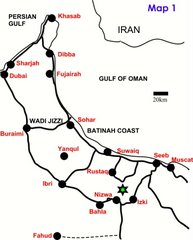
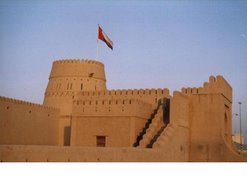
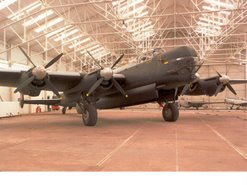
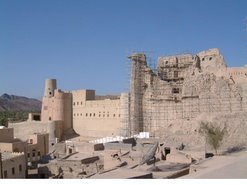






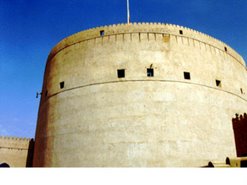





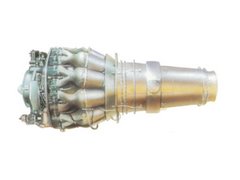




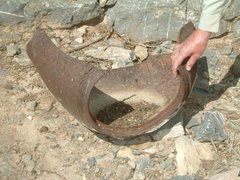







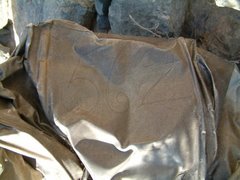


1 comment:
I can add one or two details both on
the role of Sharjah in the Jebel Akdar war and also on the modern role of the old "fort".
I was posted to RAF Sharjar as a clerk statistics in early 1958. I was supposed to work in the MT section, but as I was a (failed!) ex officer cadet I was purloined by the CO to work as his secret and confidential clerK As such I had acess to all the information going on the subject of the wae, handling highly classified signals etc;Sharjah was, as you rightly describe it, a tough environment for men and officers alike. It was supposed to be a 1 years posting; I however found the life and area so fascinating that I volunteered to stay on another year. I dont think you mentioned that one of the SAS officers,a Captain (I think°) became the general in charge of the British Forces in the first Gulf War.
Hang ups of the Venoms rockets occurred on more tha one occasion with the result that they "fired" them on approach to Sharjah.
I have followed your other links and will be looking at the 3Beverley " one next; I had many flights as a passenger in these .
That leads me onto the Museum,in 2005 I returned to Sharjah whilst working as a statistician for BP. Whilst there I visited the museum, doubly fascinating because how many times in your life do you get the chance to visit somewhere you used to work transposed into a museum. If memory serves me correctly however; I think the original contro tower was built onto the fort,sitting on top of the outside wall.
One facet of the museum which you did not mention is that they have a copy of a film made by Shell in 1935 (?) showing how one of the Hannibal class aircraft was landed its passengers taken to the fort and the aircraft serviced; it even had a route map showing other interim stops en route to Australia. The passngers were clearly upper class; probably mainly officials. Fascinating.
Well that ends my reminiscence.
Finaly I note your interest in translating sciebntific books from French/German. I live in France with a French wife who is also fluent in German ; one of my hobbies is book collecting and as such I have access to all local sources. Are there any books you have tried to find and failed ?
Incidentally I collect books which have several languages in the copy; the record to date is a hungarian publcation with6 languages; this somewhat restricts the space for contents in any given language
cheers
David Rose
Post a Comment